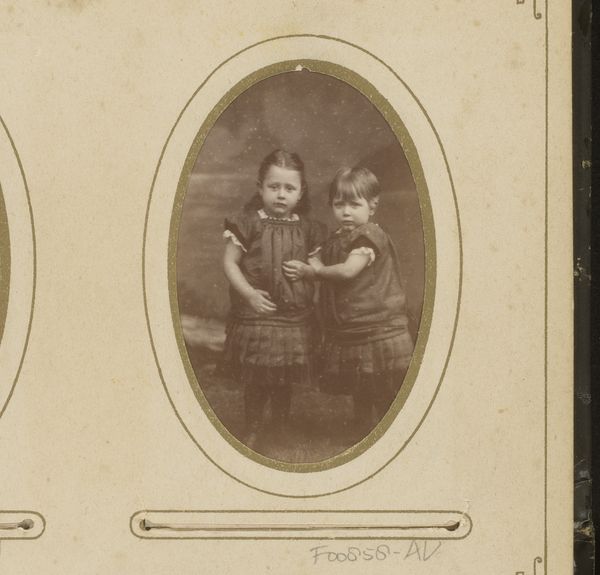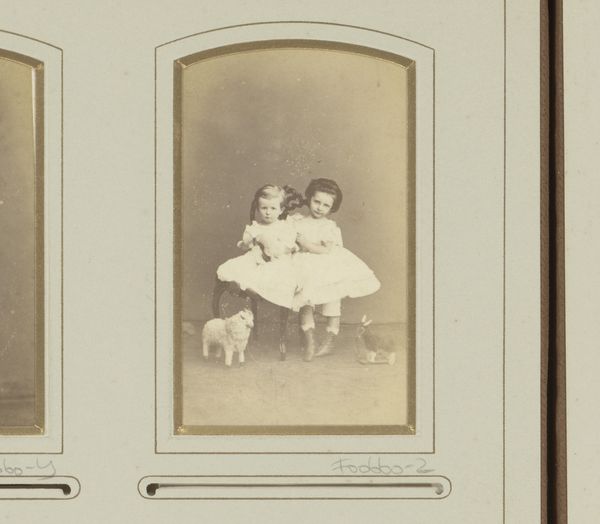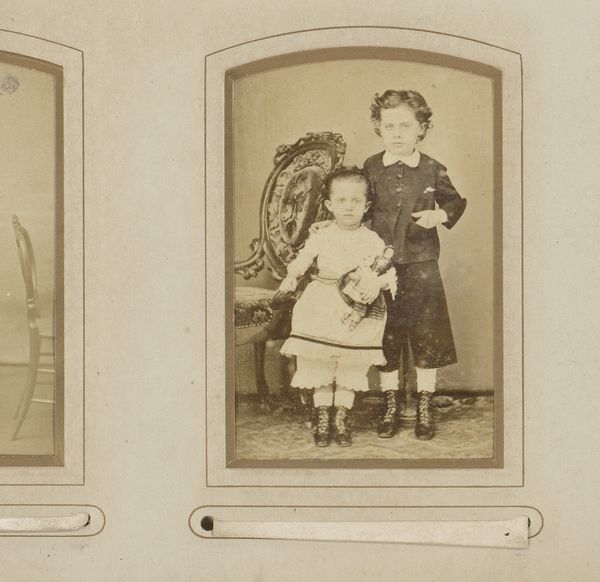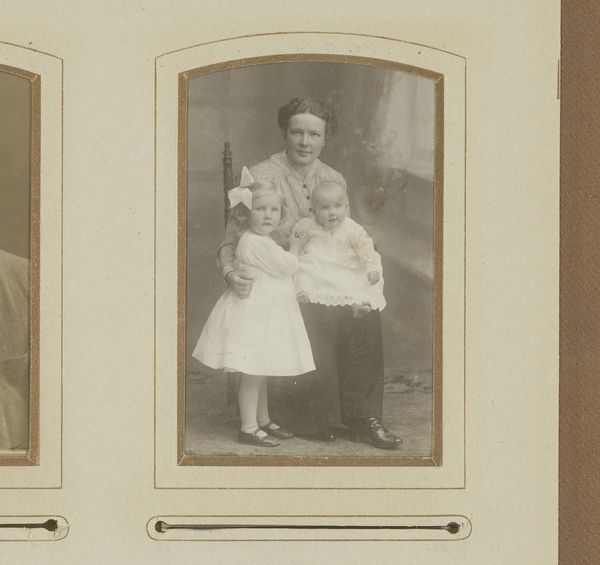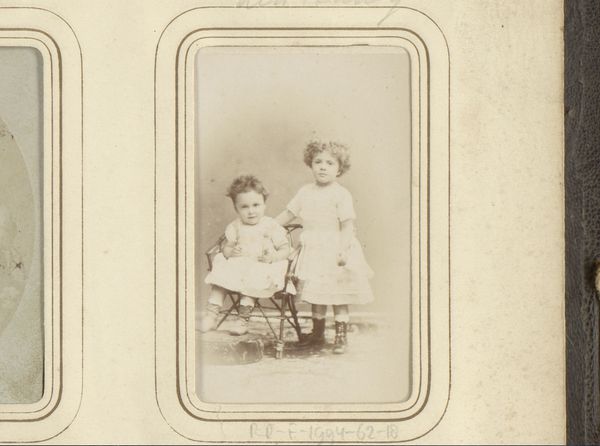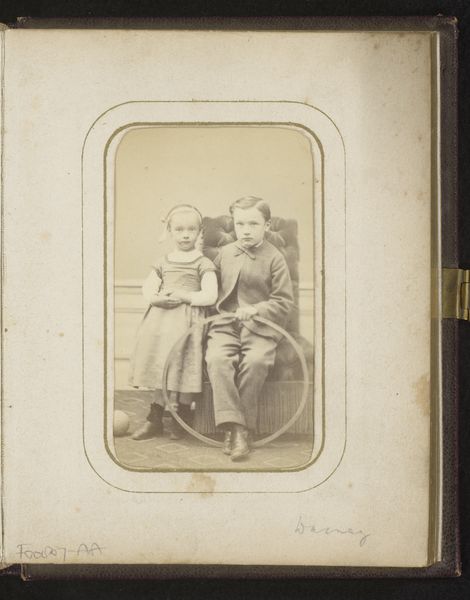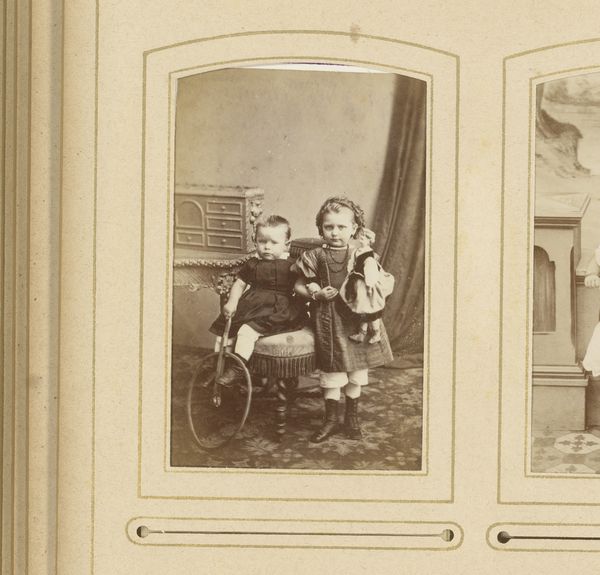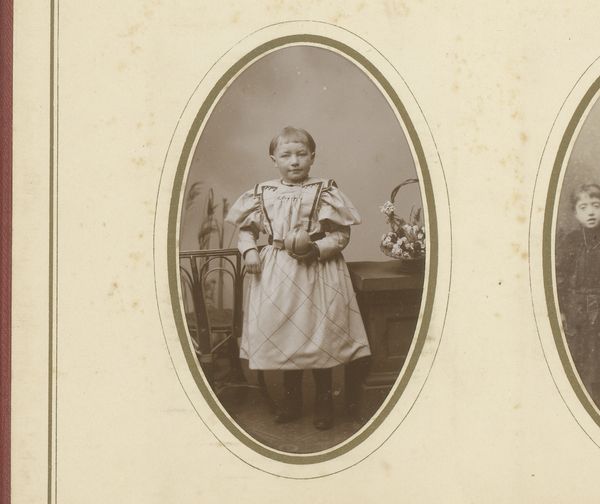
#
aged paper
#
toned paper
#
muted colour palette
#
nude colour palette
#
unrealistic statue
#
folded paper
#
muted colour
#
cardboard
#
neutral shade
#
statue
Dimensions: height 83 mm, width 52 mm
Copyright: Rijks Museum: Open Domain
Curator: This is “Portret van twee meisjes” by M. Kaufstein, likely created between 1880 and 1910. It appears to be a photograph mounted in an album, showcasing a muted, almost sepia-toned palette. Editor: Immediately, I sense a Victorian-era rigidity, yet there's also an innocent vulnerability emanating from these young girls in their matching sailor dresses. The composition is strikingly symmetrical. Curator: Note how the composition plays with form and balance. The verticality of the girls’ figures is contrasted by the subtle horizontal lines of their attire and the photograph's border itself. The subdued tones contribute to a cohesive aesthetic experience, highlighting the textural qualities of the aged paper and cardboard. Editor: The girls' matching outfits, styled like miniature sailors’ uniforms, hint at a society deeply concerned with social roles and presentation. What stories do these clothes tell about gender and class at the turn of the century? Did they have a say in what they were wearing? The somber expressions perhaps reflect the restricted roles that were expected of women at the time. Curator: Indeed. Focusing on the formal qualities, though, the careful posing and controlled lighting draw the viewer’s eye to the subjects' faces. The artist has skillfully utilized the medium to achieve a certain effect. It seems important to underscore the composition in relation to photography's own evolving status as an artistic medium at the time. Editor: I'm wondering about the setting itself—likely a staged studio backdrop—and how this impacts our perception of reality versus artifice. Considering women’s limited power during this era, were they really “captured” rather than simply portrayed? The photograph might perpetuate ideals while ostensibly representing them. What would a woman photographer from this era capture? Curator: It’s this interplay between formal technique and potential interpretations which gives the piece its enduring appeal, prompting contemplation about social mores, as well as considering the photographer's intentions. The limited colour palette contributes to the contemplative atmosphere. Editor: Absolutely. It highlights not just a single artistic intention, but raises fundamental questions about gender dynamics, power structures, and photographic representation, making us actively confront a potentially discomforting yet compelling image from our collective past. Curator: Indeed. By examining the image’s various elements, both internal and external, we open dialogues. Editor: Which proves vital for enriching our understanding of art's complexities.
Comments
No comments
Be the first to comment and join the conversation on the ultimate creative platform.
